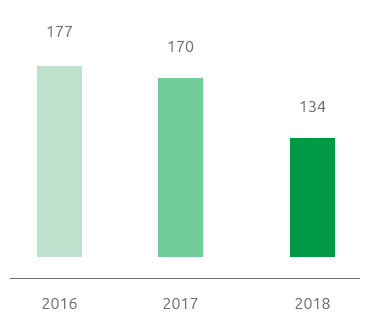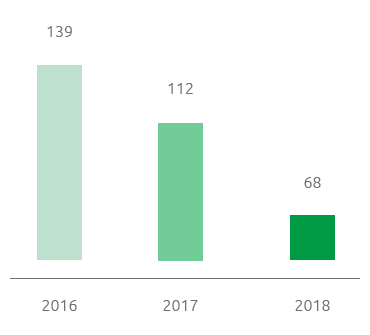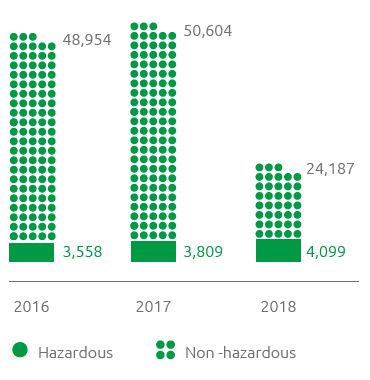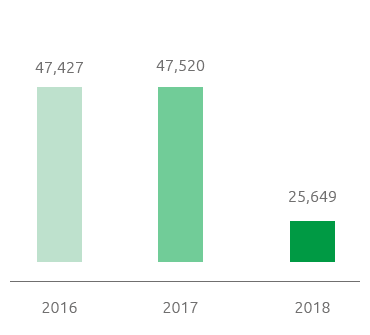Water and waste management
Snam’s water procurement and disposal activities are of little environmental significance, both in relation to the quantities used and the type of discharge. However, the Company considers water a resource that should be conserved and in that respect it is committed to keeping down its consumption and reducing its environmental impacts. Consistent with the activities carried out in previous years, in 2018 a closed-loop constructed wetland plant was installed in the Masera gas compression plant, which will make it possible to eliminate domestic waste water discharges, because they are treated and totally absorbed by the planted vegetation. With this latest installation all the compression plants, except for the Messina compression plant, which is connected to the national sewage system, are equipped with constructed wetland plant systems.
In 2018, approximately 4.13 million cubic metres of water (4 million cubic metres of sea water and 0.13 million cubic metres fresh water) were extracted. The procurement of sea water remains practically constant over time, as it is used for cooling auxiliary equipment in the LNG regasification plant. The extraction of fresh water, used mainly for office activities, fire-protection systems and for the watering of green areas, fell by 23.5% compared with 2017 and stands at around 134 thousand m3.
With regard to water discharges, the sea water is released into the sea as it is, without any treatment, since it is only used for cooling circuits, while the waste water is channelled into the sewage networks (58% of the total) or discharged, after treatment, into the soil and into surface water bodies (42% of the total).
The upstream storage activities produced approximately 5,913 cubic metres of process water (+20.6% compared with 2017). Of all this water, 2,185 cubic metres were re-injected as it is, while another (3,728 cubic metres) were sent to a purification plant for treatment.
In 2018, total waste production stood at 28,286 tonnes (-48% compared with 2017), of which over 86% belonged to the category of non-hazardous waste. 91% of waste products is connected to the maintenance and management of plants and 9% to shaft drilling activities. 60% of waste from plant maintenance and management was sent for recovery.
The lower amount of waste produced in 2018 is attributable to the lack of extraordinary works for the replacement of pipelines, activities which were carried out in the previous two-year period and which involved the production and recovery of many tonnes of ferrous metals.
Fresh water procurement (103 m3)

Fresh water discharge (103 m3)

Waste production (t)

Waste by production activities (t)
